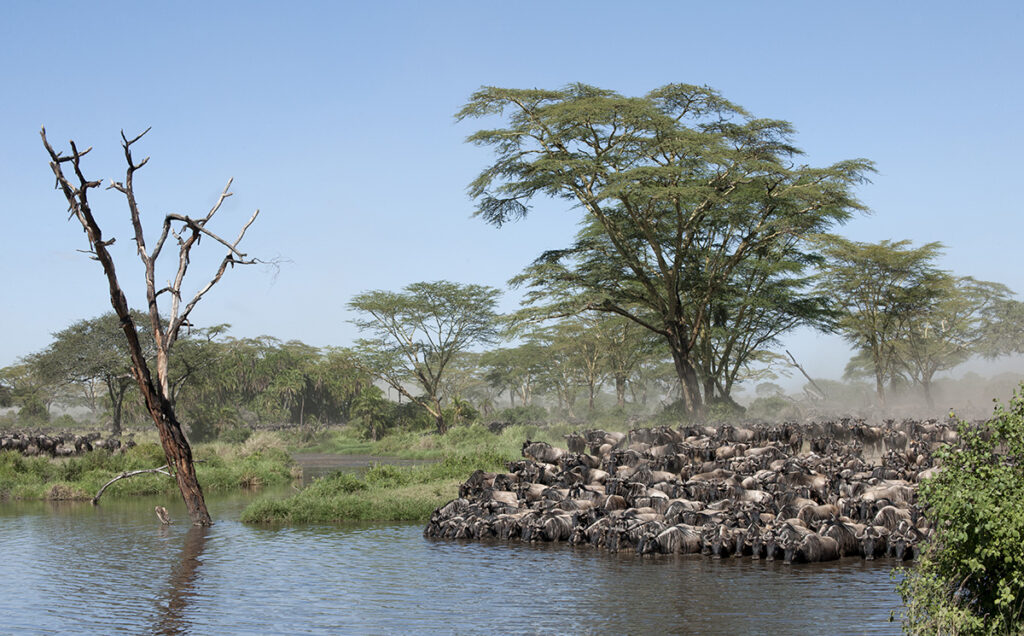Migration Quest - 10 Days
Migration Quest - 10 Days
Thousands of wildebeest, gazelles and zebras migrate each year in the dry season from the south of the Serengeti to the north and cross the Mara River towards Kenya. Later they return and keep on chasing the rain to assure fresh grassy areas. A spectacle that also attracts many predators such as lions, leopards and crocodiles. This trip takes you to the northern region of Kogatende in the Serengeti; together with your private guide you will try to follow these mega-herds. You drive to the Mara River where you might have the chance to see such a spectacular river crossing.
On the way to the Serengeti, you visit the smaller parks of Tarangire and Lake Manyara, and you go in search of the Big Five in Ngorongoro Crater. Upon arrival in Tanzania, you will spend a day at the foot of the Kilimanjaro for a leisurely time-off, with possibilities of playing a round of golf or horse riding. After the safari, fly back to Arusha for your return trip home or an extension on one of the tropical islands Zanzibar, Pemba or Mafia.Day 1: Transfer from the airport to Arusha
Upon arrival at Kilimanjaro International Airport, you will be met by our transfer driver and transferred to your lodge where the remainder of the day is at leisure – rest in your room, relax in the manicured gardens, enjoy a refreshing swim in the pool or the surrounding areas, the choice is yours. Dinner and overnight.
Day 2: Arusha National Park: The ideal place for a walking safari
Get closer to nature by taking a walk in Arusha National Park with an experienced armed ranger. Although the park is one of Tanzania’s smallest nature reserves, it has a lot to offer to the travellers. The Arusha National Park is very diverse with high mountains, craters, lakes and a beautiful flora and fauna. It is also one of the few parks in Tanzania where walks can be made. With a bit of luck, there are several bird species to be seen during the walk, for example the lesser flamingo. The Park also includes giraffes, buffaloes and various species of antelope, as well as the exotic white and black colobus monkey, which often swings high up in the trees. After the walk, the trip goes to the Momella Lakes for a picnic lunch and an afternoon game drive. During the game drive you’ll enjoy amazing views of the peaks of the Mount Meru and the Kilimanjaro.
Day 3: Elephants and baobabs in Tarangire National Park
From Arusha it is about 2 hours’ drive to Tarangire National Park. This impressive park is known for the many elephants (more than 6,000) that gather along the Tarangire River, where they can quench their thirst. This beautiful park is also home to buffaloes, wildebeests, antelopes, giraffes, zebras, ostriches, lions, leopards and cheetahs. The Park is decorated with thousands of baobab trees, some of which are more than 10 meters wide. With more than 450 bird species, Tarangire is also a paradise for bird lovers. You will get a picnic lunch from the hotel, which you can take on a picnic place surrounded by little monkeys, with beautiful views over the river and the elephants. After a long day of touring, just drive a little further for a well-deserved shower and cold drink in the lodge or tented camp.
Day 4: Lion in trees? Yes, for sure, in Manyara National Park!
Nestling at the base of the Great Rift Valley escarpment, Lake Manyara National Park is recognized for its incredible beauty and special inhabitants. Upon entering the park you imagine yourself being in the jungle: this part is a green oasis with high trees and waterfalls, the ideal habitat for big groups of baboons, waterbuck, aardvark and blue meerkats. Deeper into the park this tropical rainforest converts into wide-open savannah, where you can see many game animals such as buffalo, elephant, giraffe, impala, hippo and others.
Enjoy an afternoon of game viewing in search of the famous but rare tree climbing lion. From a sea of pink flamingos as far as the eye can see to bull elephants at close range, Lake Manyara showcases a superb variety of herd animals and birdlife.
MIGRATION QUEST
Included in this tour:
- All transport mentioned in the program
- Game viewing in 4×4 Land Cruiser with pop-up roof, fridge, binoculars and charging points
- Services of a professional English-speaking driver guide
- Accommodation and meals as per itinerary
- Mineral water, coffee, and tea while on safari
- All Park, village, and concession fees
- Guided walking safari in Arusha National Park
- Flight Serengeti-Arusha/JRO
- Government taxes and levies
- AMREF Flying Doctors evacuation insurance
Not included in this tour:
- Tourist visas $ 50 – 100 $
- Personal travel/medical insurance
- Optional activities not mentioned in itinerary
- Tips for driver guide and lodge/camp staff
- Any items of personal nature (laundry service, telephone/internet bills, souvenirs)
- Drinks during the meals
- International flights and departure taxes
Day 5: Big Five in the Ngorongoro Crater
With a diameter of 18 kilometres, an area of 260 km² and a 600-meter-high crater wall, the Ngorongoro Crater is the largest still intact crater in the world. From the edge you look out over this amphitheatre with impressive and breath-taking beauty. Green vast plains, rivers, forests, marshes and the often-white Lake Magadi form a home for about 30,000 animals. A lot of people want to witness this. As a result, it is no longer allowed to make a game drive longer than 6 hours per day. But this is enough to discover the whole crater. This Noah’s Ark is an ideal breeding ground for this unique ecosystem teeming with wildlife. Predators such as lions, leopards, cheetahs but also elephants, monkeys, zebras, gazelles, rhinos, buffaloes, wildebeest, and hippos live here. Most of these animals, whenever they want, can walk in and out of the crater through the steep crater walls as they please.

Day 6: Thousands of wildebeest and zebras in the Serengeti
Time to chase the big migration! Leaving the Ngorongoro area, the vast extensions of the Serengeti plains before you will impress you and wanting you to explore this area in deep. In general, you will find impala, giraffe, hippo, hyena and often lions and other big cats such as leopards and cheetahs. The migration, consisting of around 2 million animals, is on the move all year round. Usually, the wildebeest and the zebras during the short rainy season in October and November are to be found moving from the hills in the north of the Serengeti, to the plains in the south. During the longer rainy season of April, May and June they return north, always in search for green pastures. With fluctuations of annual rainfall, the exact location of the animals varies from year to year. Your guide however will try to establish the location of the herds and to get the best views. Naturally it also attracts a mass of predators, and you may be able to see a band of lionesses gather for a hunt.
Through the Nabi Gate you enter the Serengeti, and you keep on searching for game until you arrive at your accommodation. After taking a refreshing shower, sit down at the campfire and relax with a cold drink. The night will be filled with, far away, the hyena’s laughs and the roar of the lion and who knows, an elephant or giraffe strolling around your tent.
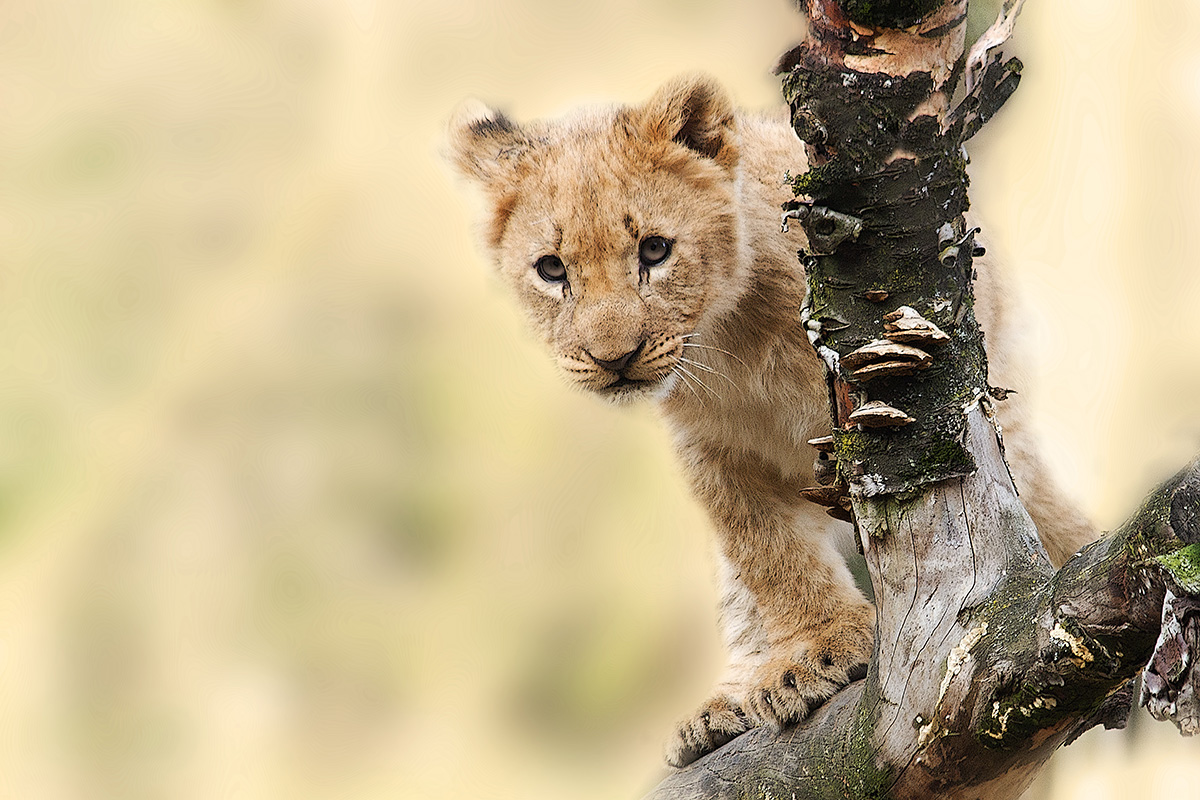
Day 7: Keep on searching for game on the endless plains
A full day to discover as much as possible of the wonders of the Serengeti, the Big Migration, and all other wild animals. Together with your guide you can set up your program: a full day of game driving with picnic lunch, or an early morning drive with back in the camp a late breakfast, rest, and lunch, after which you set off again late afternoon. You drive through a varied landscape, often in the wide-open savannah scattered with the typical kopjes (rock formations), but also through hilly forests and along the hippo pools, where dozens of hippos are relaxing in the water. If you would like to enjoy a real once-in-a-lifetime experience, go for a hot-air balloon safari (optional with supplement).
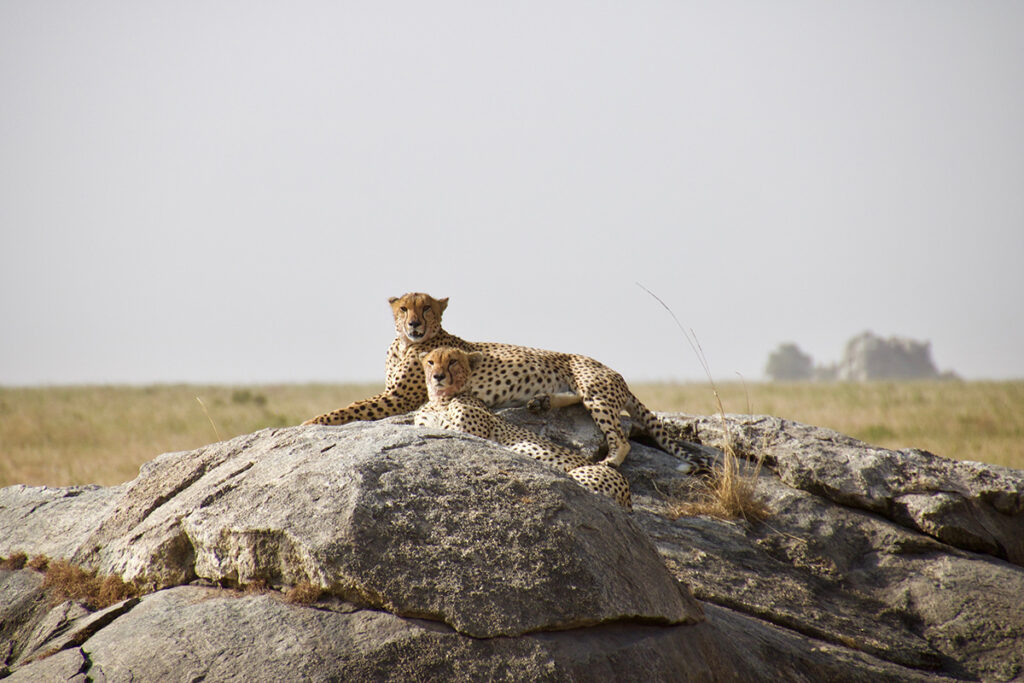
Day 8: Another spectacular day in the Serengeti
Two days in the Serengeti are not always enough, there is so much to see! So today you leave again, along the curvy dust roads, searching for lions, leopards and cheetahs. But apart from the Big Five and the Great Migration the savannah has so much more to offer. Herds of cheerful impala and Thomson gazelle, curious zebras and elegant giraffes are all around you. And look also in the sky and the trees to discover all those colourful birds, from hard-working yellow weavers and the smart lilac-breasted rollers to the bigger secretary birds and marabou storks..
Driving and game spotting you head north towards the Mara River.
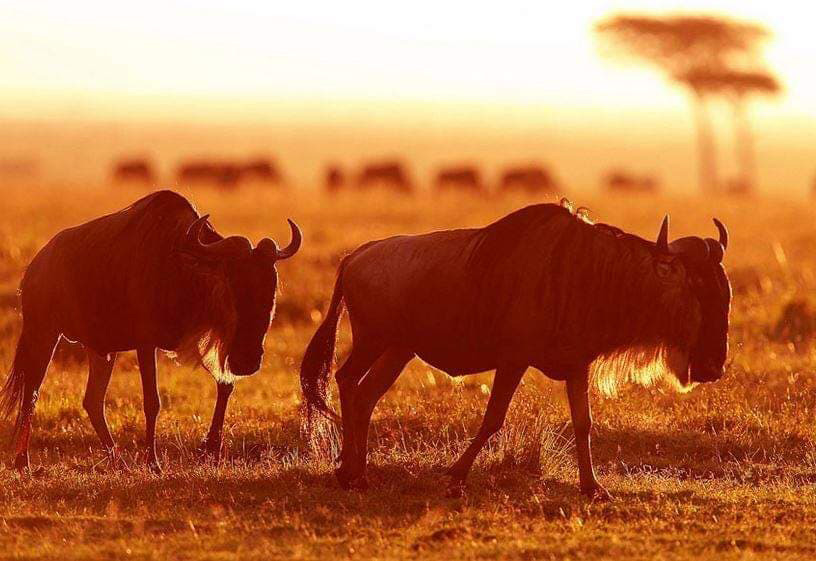
Day 9: The spectacle around the Mara River
Today you drive to the Kogatende region in the far north of the Serengeti, which borders the Kenyan Masai Mara. Here the herds of wildebeest and zebras must cross the very dangerous Mara River. Dangerous because hippos and crocodiles are already lurking to catch with this easy prey. So, the jump into the water of a wildebeest is an all or nothing for the animal. They follow the animals and stand up at a strategic point to have the opportunity to see a river crossing with their own eyes. Such an impressive spectacle of thousands of animals descending and climbing the steep banks of the river like a big spot will always stay with you!
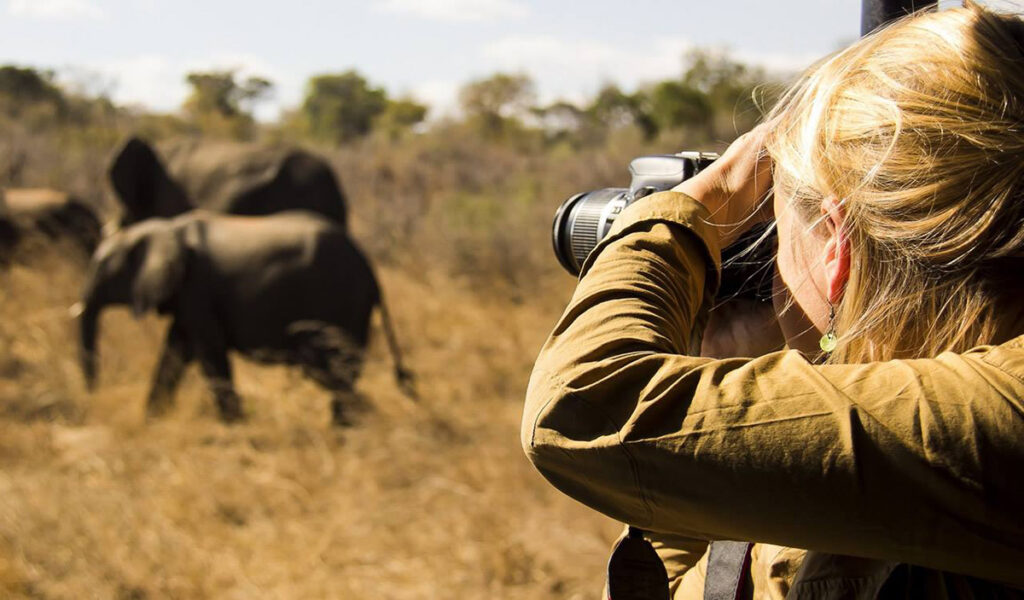
Day 10: Back to Arusha
It’s time to say goodbye to the wilderness. Your guide will take you in the morning to the Kogatende airstrip with a final game drive. An adventurous bush flight awaits you!
You board a light plane that takes you in one and a half hour to Arusha. A beautiful flight because due to the low altitude you can clearly see the rolling landscape, the savannah with the acacia trees and the herds of animals. Depending on the route, you may even be flying over the Ngorongoro. Once you arrive at the airport, say goodbye to your guide. The safari has ended and with a lot of beautiful photos and great memories you will return home. Kwa heri!
